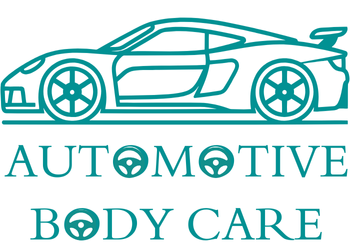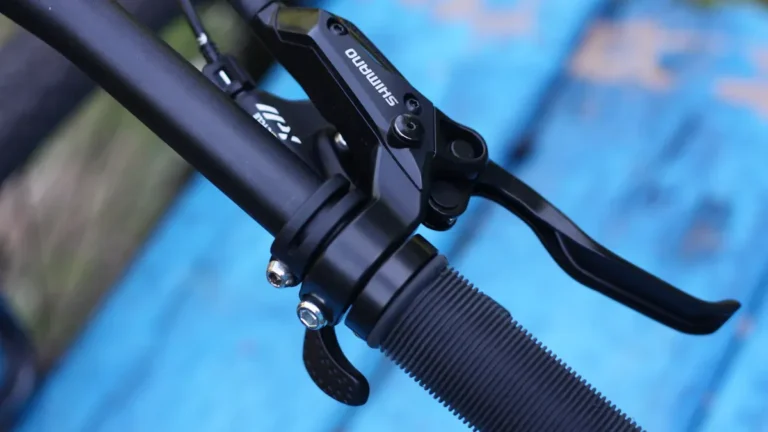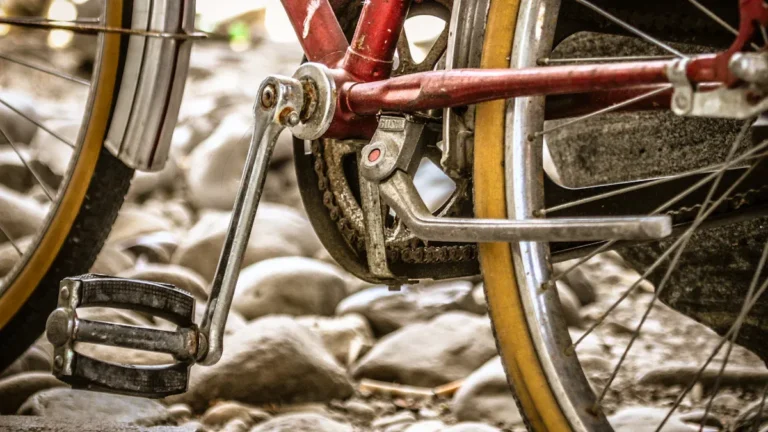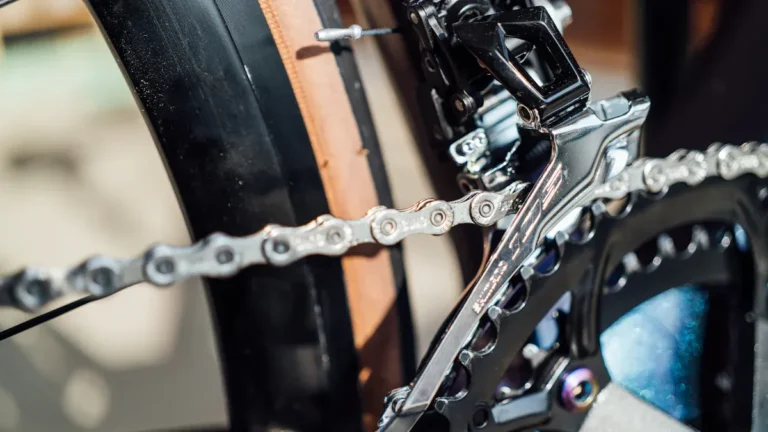Book Appointment Now
How fast can an electric bike go

You might wonder how fast can an e-bike go. Most electric bikes fall into three classes, each with its own top speed.
Class 1 e-bikes help you pedal up to 20 mph.
Class 2 models can reach 20 mph using a throttle, no pedaling needed.
Class 3 e-bikes assist you up to 28 mph when you pedal hard.
E-bike Class | Top Speed |
|---|---|
Class 1 | 20 mph |
Class 2 | 20 mph |
Class 3 | 28 mph |

Laws in your area and e-bike class decide your maximum speed. Motor power, your weight, and the road shape also play a part. Knowing these limits helps you pick the right ebike and follow the rules.
Key Takeaways
E-bikes come in three classes, each with different top speeds: Class 1 and Class 2 max out at 20 mph, while Class 3 can reach 28 mph.
Local laws dictate the maximum speed for e-bikes. Always check your area’s regulations before riding to avoid fines.
Pedal assist allows you to ride faster by boosting your pedaling effort, while throttle mode lets you ride without pedaling but is limited to 20 mph.
Consider your riding needs when choosing an e-bike. Class 1 is great for fitness, Class 2 is ideal for city commuting, and Class 3 suits speed lovers.
Always wear a helmet and follow speed limits to ensure safety while riding your e-bike.
How Fast Do Electric Bikes Go

E-Bike Classes
You will find that e-bike classifications help you understand what to expect from each type of electric bike. These classes set clear rules for how fast each e-bike can go and how you control it. In the United States, you see three main classes:
Class 1: The motor helps only when you pedal. The top speed is 20 miles per hour.
Class 2: The motor can work with a throttle, so you do not need to pedal. The top speed is also 20 miles per hour.
Class 3: The motor helps only when you pedal, but you can reach a higher top speed of 28 miles per hour. Most states do not allow a throttle on Class 3 e-bikes.
Here is a simple table to compare these classes:
Class | How It Works | Top Speed |
|---|---|---|
Class 1 | Pedal assist only | 20 miles per hour |
Class 2 | Throttle or pedal assist | 20 miles per hour |
Class 3 | Pedal assist only | 28 miles per hour |
Tip: E-bike classifications make it easier for you to choose the right model for your needs and to follow local laws.
Speed Limits
Speed limits for e-bikes depend on where you ride. In the U.S., most states follow the three-class system. You will see Class 1 and Class 2 e-bikes limited to 20 mph, while Class 3 e-bikes can reach 28 mph. Some cities, like New York City, set lower limits for safety. For example, New York City caps Class 3 e-bikes at 25 mph because of heavy traffic.
If you travel to Europe, you will notice different rules. Most European countries limit standard e-bikes (called Pedelecs) to 15.5 mph (25 km/h). Faster models, called Speed-pedelecs, can reach 28 mph (45 km/h), but these often count as mopeds and need extra paperwork.
Here is a table showing how speed limits compare in different regions:
Region | Max Legal Speed | Throttle Allowed? | Category |
|---|---|---|---|
U.S. Class 1 | 20 mph | No | Bicycle |
U.S. Class 2 | 20 mph | Yes | Bicycle |
U.S. Class 3 | 28 mph | No | Bicycle (helmet required) |
Europe (Pedelec) | 15.5 mph | No | Bicycle |
Europe (S-Pedelec) | 28 mph | No | Moped |

Local governments can set their own rules. For example, Maryland limits motor power to 500 watts, while Florida and Mississippi do not set a maximum power but keep the speed at 20 mph. Always check your city or state laws before you ride.
How Fast Is an Ebike
You might ask, “how fast is an ebike in real life?” The answer depends on how hard you pedal and the type of e-bike you use. Most riders on a Class 1 or Class 2 e-bike cruise at 15 to 17 mph with casual pedaling. If you pedal harder, you can reach 18 to 22 mph. On a Class 3 e-bike, aggressive pedaling lets you hit speeds up to 28 mph or even a bit more on flat roads.
Here is a table showing typical speeds:
Riding Effort | Average Speed (mph) | Peak Speed (mph) |
|---|---|---|
Casual Pedaling | 15-17 | 20-22 |
Moderate Pedaling | 18-22 | 24-26 |
Aggressive Pedaling | 23-26 | 27-28+ |
You will notice that these speeds are much higher than what most people reach on a regular bicycle. E-bike classifications and local laws keep you safe and help you share the road with others. When you ask, “how fast can an e-bike go,” remember that the answer depends on the class, the rules in your area, and how much effort you put in.
What Affects Electric Bike Speed

Motor Power
Motor power plays a big role in how fast your ebike can go. A larger motor gives you more torque, which means you can reach higher speeds, especially when riding uphill or carrying extra weight. However, the wattage rating alone does not always show the full picture. The controller and battery also affect how much power the motor can use. For example:
High-performance controllers adjust motor output for better performance.
Higher battery voltage lets the motor deliver more power, which can increase top speed.
Larger battery capacity helps maintain speed over longer rides.
Factor | Description |
|---|---|
Motor Power | Higher wattage motors provide more power, enabling greater speeds. |
Battery Voltage | Increased voltage allows more power to be delivered to the motor, enhancing top speed. |
Controller Capabilities | High-performance controllers can unlock the full potential of the motor and battery, increasing speed. |
Note: Even with a powerful motor, local laws may limit your e-bike’s speed.
Rider and Terrain
Your weight and the terrain you ride on also affect how fast your ebike can go. Heavier riders may notice slower acceleration and lower top speeds, especially on hills. The type of surface matters too. Smooth pavement allows for higher speeds, while rough or wet surfaces slow you down. Here is a quick look:
Factor | Impact on Speed Performance |
|---|---|
Rider Weight | Heavier riders may experience lower top speeds and slower acceleration, especially on inclines. |
Terrain Type | Climbing hills slows down speed; flat surfaces allow for maximum speed maintenance. |
Surface Type | Smooth pavement offers less resistance, enabling higher speeds compared to rough terrains. |
Wind and weather also play a part. Headwinds can slow you down, while tailwinds give you a boost. Cold weather can reduce battery performance, which lowers your electric bike’s speed.
Legal Limits
Legal limits set the maximum speed your e-bike can reach. These rules change by state or country. For example, California and Texas allow Class 3 e-bikes to go up to 28 mph, but New York limits all e-bikes to 20 mph. Some places give fines or other penalties if you go too fast.
State | Speed Limit | Notes |
|---|---|---|
California | 28 mph (Class 3) | Throttle limited to 20 mph |
Texas | 28 mph | No helmet required over 18 |
New York | 20 mph | All e-bike types |
New Jersey | N/A | $250 fines for first-time offenders |
Oregon | N/A | Dealers must certify e-bikes meet limits |
Maryland | N/A | Fines for modifying motors |

Tip: E-bikes can go 10–20 mph faster than traditional bikes, depending on these factors. Most regular bikes average 10–15 mph, while e-bikes often cruise at 15–20 mph or more.
How Fast Can an E-Bike Go with Assistance
When you ride an ebike, you can use two main systems to help you go faster: pedal assist and throttle. Each system changes how you ride and how fast you can go.
Pedal Assist
Pedal assist, also called pedal assistance, gives you a boost when you pedal. The motor senses your effort and adds power, making it easier to ride up hills or reach higher speeds. With pedal assist, you stay active and control your speed by how hard you pedal. In the U.S., pedal assist can help you reach a top speed of 28 mph on Class 3 e-bikes. This is faster than most people can go on a regular bike.
Pedal assist lets you ride faster when you pedal harder.
You can reach up to 28 mph with pedal assist on a Class 3 e-bike.
Pedal assist feels like natural cycling but with extra power.
System Type | Key Features | Impact on Riding Experience and Speed |
|---|---|---|
Pedal-Assist Systems | – Higher maximum speeds when combined with pedaling | – Enhances natural cycling experience and promotes fitness |
– Gradual, controlled acceleration | – Superior performance on long-distance rides |
Tip: Pedal assist is great if you want to stay active and enjoy longer rides with less effort.
Throttle
Throttle mode works more like a scooter. You twist a grip or push a button, and the motor moves the electric bike forward without pedaling. Throttle gives you instant power, which helps in stop-and-go traffic or when you need a quick start. In the U.S., the law limits throttle speed to 20 mph, even if your ebike can go faster with pedal assist.
Throttle mode gives you power without pedaling.
The legal maximum speed for throttle is 20 mph.
Throttle is best for short trips and city riding.
System Type | Key Features | Impact on Riding Experience and Speed |
|---|---|---|
Throttle Systems | – Immediate power delivery for quick starts | – Ideal for urban commuting and short bursts of speed |
– Consistent speed maintenance without physical effort | – Provides convenience and control without pedaling |

Note: Modifying your ebike to go faster than the legal limit can break local laws and may lead to fines.
You can see that pedal assist and throttle offer different ways to ride. Pedal assist gives you a higher top speed and a more active ride. Throttle offers easy starts and steady speed, but with a lower speed cap. Knowing what each system does helps you pick the right e-bike for your needs and follow the rules.
Choosing the Right Ebike
Matching Speed to Needs
When you choose an ebike, you want to match its speed and features to your daily needs. Think about how you plan to use your electric bike. Some people ride to work in the city. Others enjoy long rides on country roads or need a bike for fitness. Each e-bike class fits different riders:
Class | Speed Limit | Throttle Use | Ideal Riders |
|---|---|---|---|
Class 1 | Up to 20 mph | No | Casual riders, fitness cyclists |
Class 2 | Up to 20 mph | Yes | Urban commuters, flexible use |
Class 3 | Up to 28 mph | No | Speed lovers, long-distance riders |
Class 1 e-bikes work well for fitness and leisure. You can ride on most bike paths.
Class 2 models help in city traffic. The throttle lets you start quickly at stoplights.
Class 3 e-bikes suit people who want higher speeds for longer trips.
Tip: Decide if you need a city cruiser for busy streets or a trail explorer for rough paths. City cruisers are light and easy to handle. Trail explorers have strong tires and better suspension.
Local Laws
Before you buy or ride an e-bike, check the rules in your area. Local laws decide where and how fast you can ride. Some places allow all classes on bike paths. Others limit Class 3 bikes to roads only.
E-Bike Class | Description | Speed Limit | Riding Restrictions |
|---|---|---|---|
Class 1 | Pedal-assist only, no throttle | 20 mph | Allowed on bike paths, roads, and shared trails |
Class 2 | Throttle-assisted, can move without pedaling | 20 mph | Allowed on bike paths, roads, and shared trails |
Class 3 | Pedal-assist only, no throttle | 28 mph | Often not allowed on multi-use trails or sidewalks |
Check if your city has special rules for e-bikes.
Make sure your bike matches the class you want.
Learn where you can ride and if you need a helmet.
Some states ask for a license or registration.
Note: Following local laws keeps you safe and helps everyone share the road.
You can see the main speed limits for each class in the table below. These limits help you ride safely and follow the law.
Class | Speed Limit | Motor Assistance | Throttle | Trail Access |
|---|---|---|---|---|
Class 1 | 20 mph | Pedal-assist only | Not permitted | Generally allowed on bike paths |
Class 2 | 20 mph | Pedal-assist and throttle | Permitted | Allowed on most bike paths |
Class 3 | 28 mph | Pedal-assist only | Not permitted | Allowed in road lanes, not on bike paths |

Before you ride, check your local laws. Rules can change by city or state. Think about your riding habits and choose an electric bike that fits your needs. Avoid common mistakes like modifying your bike or skipping registration. Stay safe by wearing a helmet and slowing down in busy areas. Following speed limits and using protective gear lowers your risk of accidents.
FAQ
What is the fastest legal speed for an electric bike?
You can ride up to 28 mph on a Class 3 e-bike in most states. Some cities set lower limits for safety. Always check your local laws before you ride.
What affects how fast my e-bike can go?
Motor power, your weight, terrain, and battery strength all change your speed. Legal limits also control your top speed.
Tip: Flat roads and lighter loads help you go faster.
What happens if you ride faster than the legal limit?
You may get a fine or lose your right to ride in some areas.
Always follow speed rules to stay safe and avoid trouble.
What is the difference between pedal assist and throttle?
Pedal assist boosts your speed when you pedal. Throttle lets you move without pedaling.
System | How It Works | Max Speed |
|---|---|---|
Pedal Assist | Helps when you pedal | 28 mph |
Throttle | No pedaling needed | 20 mph |
What should you check before buying an e-bike?
Look at speed limits, motor type, battery size, and local laws.
Make sure the bike fits your needs
Check if you need a helmet
Ask about trail access
🛒 Smart shopping keeps you safe and legal!



